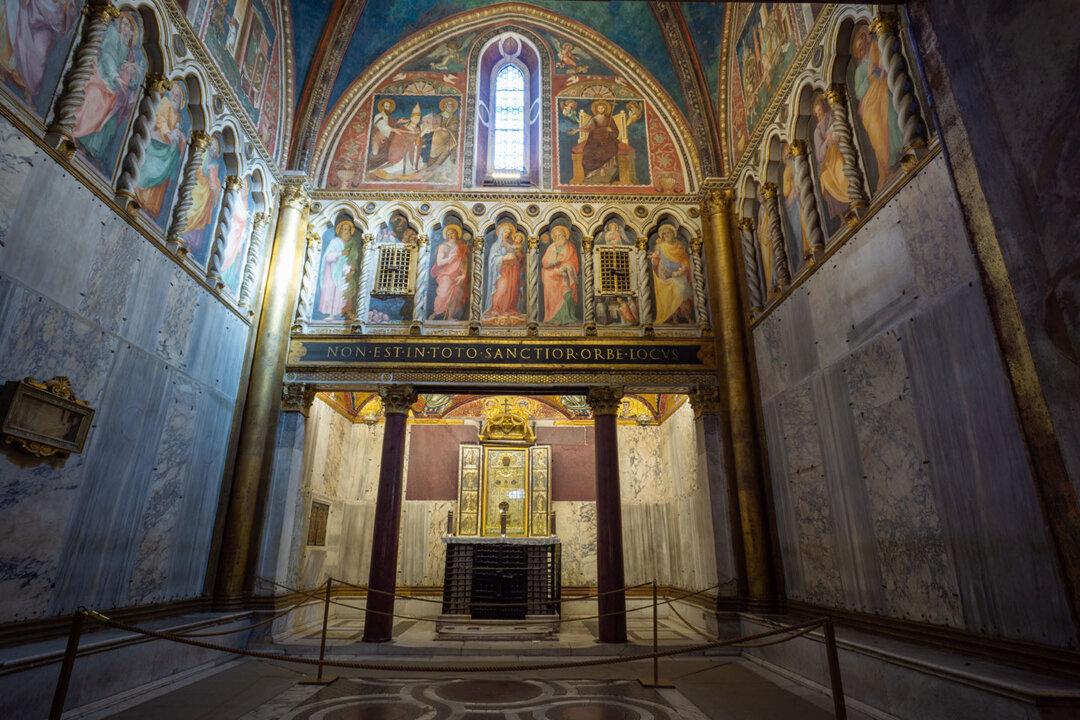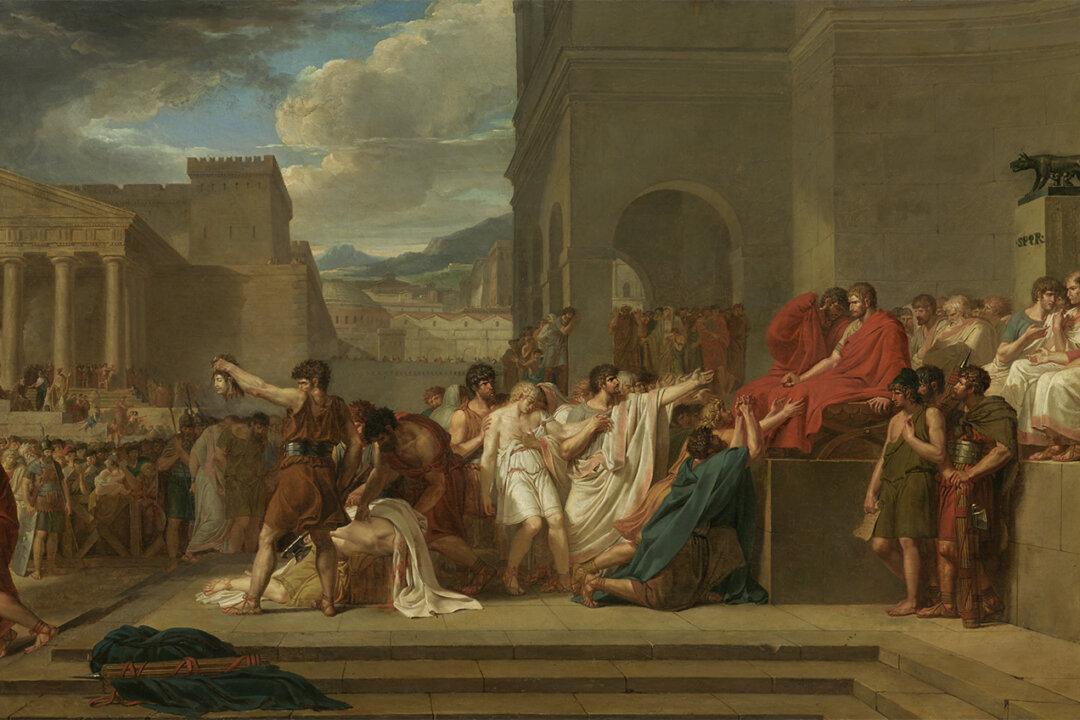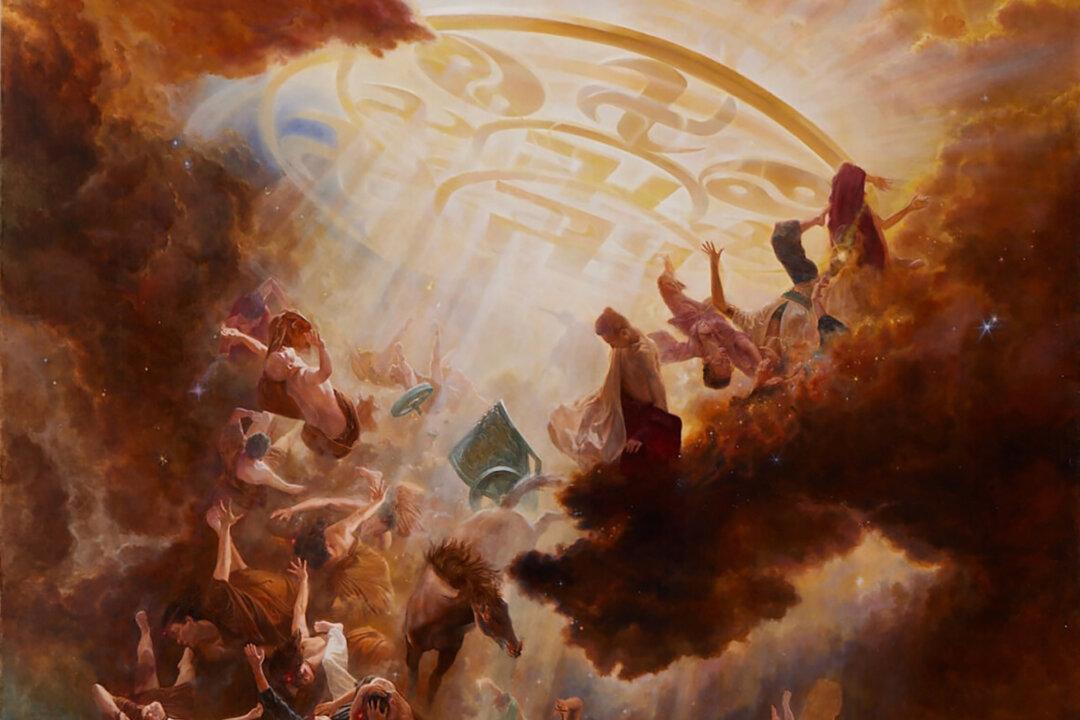Sitting on a high rock, he would sing as he gazed out to sea. ... In this way Polyphemus shepherded his love with singing. —Theocritus, “Idyll XI,” trans. Neil HopkinsonSerenity rules over the meadows, peace over the sea. Clouds part as white gulls hover among rocky peaks and rich leaves. It’s in this bucolic landscape on a monumental canvas that Nicolas Poussin has set his human and demigod figures. Having spent decades of his career between Paris and Rome, the 57-year-old artist had successfully established himself as the premier painter of his age, successor to the great Italian masters of the Renaissance.

Poussin’s classicizing paintings of history and mythology display stoic constraint and narrative clarity, while fusing his excellence in both drawing and coloring. Most admired was his erudite use of ancient sources, which was predicated on his affinity for the classical letters.
Toward the mid 17th century, Poussin gave landscapes increasing prominence in his pictures. While retaining some narrative stories, the artist would embed the scaled-down figures within a dominating environment. “Landscape with Polyphemus,” now in the collection of the Hermitage Museum in Saint Petersburg, is a product from this period.
In the painting “Landscape with Polyphemus,” Poussin paints three registers of activity: in the foreground, playful nymphs emerge from a pond, partially draped. One of them gazes amorously at the viewer, while the other two look behind their shoulders at the satyrs lurking in the bushes. In the middle distance are plowmen and women at work, cultivating a still arcadian land. Finally, in the backdrop loom towering rugged mountains on which our giant protagonist reclines.
The figure almost blends in with the barren rocks, its contours forming a peak. Polyphemus has laid down his shepherd’s staff and taken up the pan flute, and, gazing out at the sea, he pipes away his lovelorn sorrows.

Unlike many early modern paintings that offer pictorial interpretations of well-known Greco-Roman tales, “Landscape with Polyphemus” illustrates no specific text and depicts no single story. Rather than capturing a moment of action, the picture suspends its figurations in a peaceful state of mellowness.
The playful demigods in the foreground and the humans working in the field don’t engage with each other, and Polyphemus, the only identifiable figure in this picture, is pushed even further into the background. The misty atmosphere further emphasizes his isolation and solitude.
This was a rather uncommon depiction—Cyclopes were known as fierce, savage creatures. In the “Odyssey,” Homer describes them as a group of uncivilized shepherds, and first introduces the one-eyed Polyphemus as a man-eating giant who assaults the cunning hero’s men and ends up getting blinded.
I pasture a thousand sheep, and from them I draw and drink the finest milk. Cheese does not fail me in summer or autumn or at the end of winter; my racks are always laden. I know how to pipe like no other of the Cyclopes here, singing of you, my dear sweet apple, and of myself, often late into the night. —Theocritus, “Idyll XI,” trans. Neil HopkinsonNevertheless, this romantic interpretation of the Polyphemus story gradually fell into obscurity during Roman times. Depictions of him often showed his violent side, partly influenced by the wide popularity of Euripides’s play “Cyclops,” which reenacts the episode from the “Odyssey.” And ever since Ovid’s narrative of the story from Galatea’s perspective, in which the raging giant assaults the nymph and her lover, the image of Polyphemus remained that of a monstrous brute through the Middle Ages and the Renaissance, largely due to the enduring popularity of the “Metamorphoses.”
This brings our narrative back to Poussin’s century. By restoring Polyphemus to the pastoral setting, the artist bypasses the pictorial tradition that was immediately available to him and reconnects with his Greek sources. The giant’s sorrow and longing are turned away from the viewer toward the sea, and his melancholic song can only be imagined. Neither Odysseus nor Galatea is figured in the picture; the shepherd exists in solitude among and above his beloved landscape, with which he is at present unconcerned.
Forsaking his deft depiction of human emotion, Poussin gives us only a silhouette from behind, yet by doing so, he manages to pack so much emotion into the figure that it permeates the entire painting—the tranquil waters at bay, the gliding seagulls, the reclining nymphs, and the plowmen resting from work—everything derives meaning from Polyphemus, while also existing separately in a natural state of unawareness, as if oblivious to the poet’s song. Similarly, the shepherd turns his back to the land, and his heart and eye to the sea, existing in himself.

But is there really no one listening? Could the lovelorn melody have caught the attention of the laureled figure in the foreground left, who seems to listen intently? With his face turned toward the musician, he is separated from the other figures, even mimicking the giant’s reclining posture. On his right, the group of three nymphs suddenly discover the two lurking satyrs, who, driven by their desire, are always trying to have their way.
While two nymphs seem to fix their gaze on the satyrs, one looks directly out at us, almost posing the viewer as the third satyr. She smiles amorously, as if inviting us to her poetic world and the game of imagination and interpretation.
Though presented as an unsophisticated, primordial Arcadia, Poussin’s “Landscape with Polyphemus” is in fact highly aware of its modern viewers. It engages us in an interpretive play between visual symbolism and meaning, and it invites us to follow the artist’s footsteps back to the inexhaustible fountainhead of Greek mythology. Outstanding in artistic skill and well versed in the classical letters, Poussin was able to achieve a nuanced understanding of Greco-Roman civilization, all the while using ancient words to compose his own poetry.





